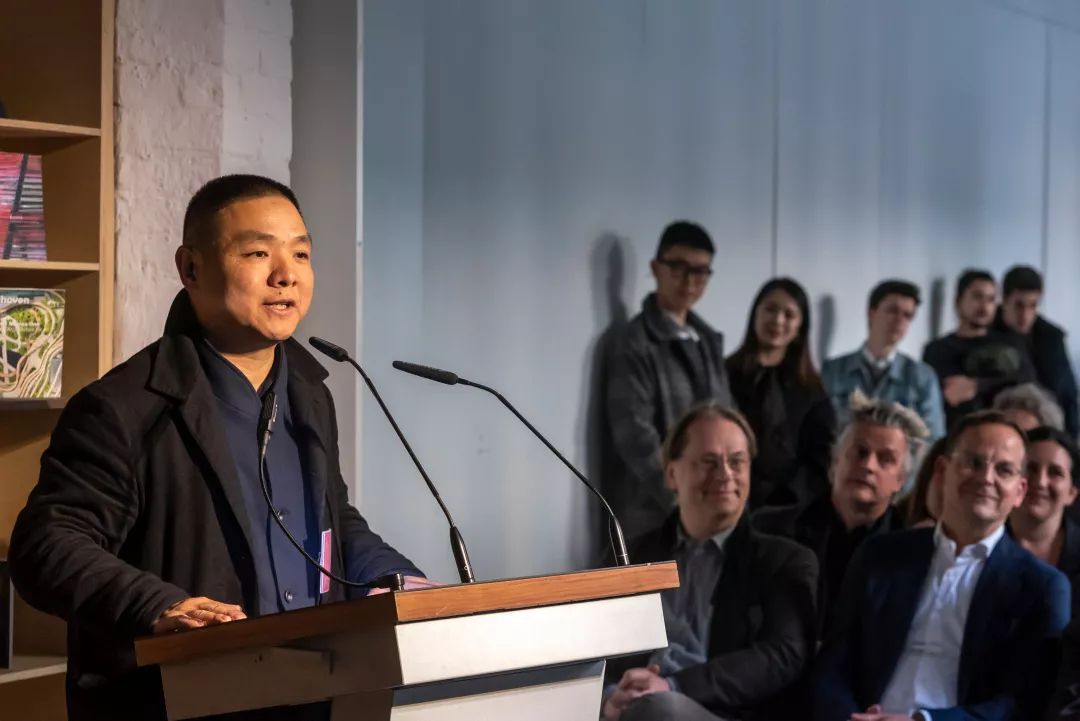


He is the Dean of Tongji University College of Architecture and Urban Planning. As an architecture scholar, critic, and curator, he is promoting the development of Chinese architecture and culture, through education, research, criticism, and interdisciplinary curation.
He was the director of Busan Architectural Culture Festival 2017, and curator of the Pavilion of China at the 16th Venice International Architecture Biennale (2018) and many other important international exhibitions, showing the power of Chinese architecture to the world.
He also serves as the Secretary-General of the Committee of Architectural Criticism, the Architectural Society of China, the member of CICA (Comité International des Critiques d’Architecture), and the editor-in-chief of Architecture China, leading the advancement of contemporary architecture in China and overseas.

Perhaps, 2020 has fundamentally changed our perception toward distance and space. Although the hint of this change had already been shown, it was until the time of “social distancing”, or the experience of another space—meeting through the video meeting platform Zoom, viewing an exhibition online, enjoying an online concert that features performers from different times and spaces, or watching a film synchronously with numerous people—that started to make the change so ubiquitous. If the urban physical space relies on locality and synchronicity, then distance and time will eventually collapse in the virtual space, or receive a new scale in some other way.
Located at the Yangpu Riverside, Riverside Passage was completed by architect Liu Yichun in 2019. Extended from the preserved long wall of the original gashouse, the Riverside Passage creates an experience of juxtaposing the lively urban life and tranquil natural scenery and their awareness of each other. If one says that the completion of a building initiates a decaying life journey, then the industrial structure at the riverside is similar to the still but deep Huangpu River in the front, footnoting our sentiment toward the Chinese phrase “how it flows on”, an expression for the passage of time.

In the central Lujiazui area across the river, APSMUSEUM founded by Robin Wong provides a completely different space experience—a reflection on art evoked by the return to a pure state departing from the loud and prosperous commercial center. If one says that architects are constructing the physical space, then artist Qiu Anxiong’s work is opening up a virtual ink world filled with fantasies and creativity, yet full of warnings and critiques. When architects and artists meet at the APSMUSEUM, what possibilities will they bring to space?
This is what the exhibition aims to present: the past and the present, the physical and the virtual, the ruined and the alive, in the exhibition space at the APSMUSEUM, all fold into a long wall and a long screen. Here, Liu Yichun reconstructs the actual space on the riverside in an abstract way. As people step into the long gallery, they are entering another “Riverside Passage” reconstructed by the projection of the actual space at the Riverside Passage. On the other hand, through a series of floating and weightless humans and objects, Qiu Anxiong’s creation gives the urban daily scenery a surreal “lightness”. In the virtual space, these humans and objects gradually departing from the ground and floating in the air also seem like they are wandering in a garden. The overlap of reality and virtuality form an experience that alienates the familiar urban space, transcending the space and connecting the physical Riverside Passage with the imaginary garden at the museum. Through data transmission, the “Riverside Passage” at the museum reversely implants the existence of riverside into the place. This “Riverside Passage” is the imagery twin of the actual Riverside Passage, and the further explanation and recreation of the latter.


We invite you to the “Riverside Passage” at the APSMUSEUM to gaze at the scenery and drifting humans and objects. We also invite you to the Yangpu Riverside to look back at the virtual scenery at the actual Riverside Passage. Here and there, the “double-sided passage” is rewriting a type of experience regarding the urban space, and waiting for the resonation between the current space and time, the reality and virtuality, in the viewer’s mind.

Dr. Xiangning Li is dean and full professor in history, theory, and criticism at Tongji University College of Architecture and Urban Planning. He is the editor-in-chief of Architecture China. He is a member of CICA (Comité International des Critiques d'Architecture), and has published widely on contemporary Chinese architecture and urbanism in international architectural magazines including Architectural Review, A+U, Architectural Record, Arquitectura Viva, Space, Domus, and Volume. He has served as visiting scholar and professor at various institutions including MIT, MAK Center of Art and Architecture(Los Angeles), TU Darmstadt, Harvard GSD, etc. He has curated a number of exhibitions including the Pavilion of China at the 16th Venice International Architecture Biennale, “Toward a Critical Pragmatism: Practice of Contemporary Individual Architects in China” at Harvard GSD, 2017 Shanghai Urban Space Art Season, 2013 Shenzhen/Hong Kong Bi-city Biennale, Shanghai Westbund 2013 Biennale, etc. In addition to that, he has been working with international museums and institutes, including Milan Triennale and Goethe Institute, curating exhibitions on Chinese architecture. He has been a jury member to many international awards and competitions including Spanish International Architectural Award, Holcim Award for Sustainable Construction, and Mies van der Rohe Award the European Union Prize for Contemporary Architecture.